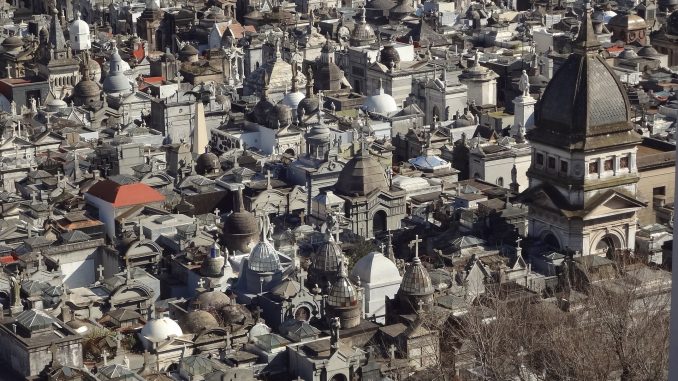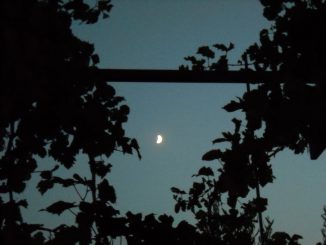
The Recoleta Cemetery, conveniently located in the Recoleta neighborhood of Buenos Aires is one of the most popular tourist destinations in the city. Dating to the early 18th century, Recoleta Cemetery contains nearly 5,000 vaults and is the final resting place of many of Argentina’s most famous and influential residents of the last 200 years. While the architectural features of the cemetery include thousands of statues, grand Doric columns, intricate wrought iron, and beautifully designed mausoleums, it is the famous residents that make it a destination of choice for thousands of tourists each year.
The monks of the Order of the Recoletos having arrived in this region in the early eighteenth century built the cemetery around their convent and a church, Nuestra Señora del Pilar built in 1732. While the monastic order disbanded in 1822, their legacy and cemetery have gone on to influence generations of Argentinians.

The 1822 layout was designed by French civil engineer Próspero Catelin, famed for his previous design of the Buenos Aires Metropolitan Cathedral. The last time Recoleta Cemetery was remodeled was 1881 by the Italian-Argentinian architect Juan Antonio Buschiazzo whose fingerprints still remain in numerous projects across the city. The mausoleums are decorated in a variety of fashions that represent the time period and beliefs of the builders. With styles ranging from Art Nouveau and Art Deco to Neo Gothic and Romanesque, many of the mausoleums have been declared Patrimonio Historical Nacional by the city of Buenos Aires.
In 2011, the BBC declared La Recoleta it as one of the world’s best cemeteries, and in 2013 CNN listed it among the 10 most beautiful cemeteries in the world.
Recoleta Cemetery Facts
- The mausoleum of Evita Perón is the most visited single spot in the cemetery.
- Tiburcia Dominguez and her husband Salvador María del Carril spent thirty years of their married lives without speaking to each other. The distaste they had for eachother was taken to their graves after the Tiburcia determined via her will that their statues were to be facing opposite directions.
- Catalina Dogan, a servent of the Saenz Valiente family was buried in the prestigious cemetery, but due to a strong class system of the day was outside the family plot.
- More than 25 Argentinian Presidents have been laid to rest in Recoleta Cemetery.
Visiting Recoleta Cemetery
- There is a small fee to enter the cemetery but there are free guided tours offered every day in English, Spanish, and Portuguese.
- Recoleta Cemetery is open daily from 7:00am to 6:00pm (subject to holidays).
- Despite being an open air Art Gallery and Museum of Argentinean History, it is first and foremost a cemetery.
- While there is certainly nothing wrong with taking pictures of mausoleums, sculptures and monuments, it is considered highly disrespectful to violate the privacy of departed by snooping around or entering the mausoleums if you are not family of the departed.
Notable Residents of Recoleta Cemetery
- Evita Perón, First Lady of Argentina
- Isabel Walewski Colonna
- Isabel was the illegitimate grandchild of Napoleón Bonaparte, she was born in Buenos Aires and died aged 6 days.
- Dorrego-Ortiz Basualdo
- The family pantheon of Dorrego-Ortiz Basualdo is one of the largest structures in Recoleta cemetery. The mausoleum was built for the members of a wealthy landowning family and features a sculpted virgin lighting a seven-branched candelabrum.
- Admiral William Brown, the father of the Argentine Navy
- Novelist Eduardo Mallea.
- Luis “The Bull of the Pampas” Ángel Firpo.
- Luis was a famous boxer with a record of 31,4,2 and his mausoleum features a life sized statue.
- Juan Bautista Alberdi
- An Argentine political theorist and diplomat who he lived most of his life in exile in Montevideo and Chile. He is credited with influencing the Constitution of Argentina.
